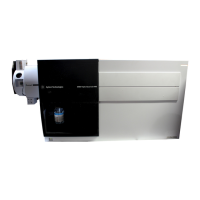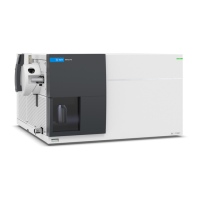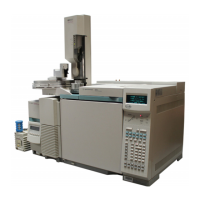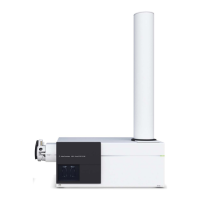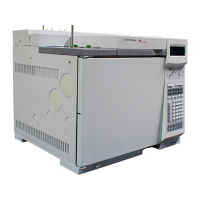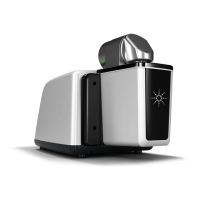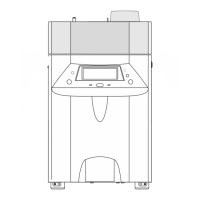Inner Workings – Triple Quadrupole MS versus Single Quadrupole MS 2
How Dynamic MRM works
Agilent 6400 Series Triple Quad LC/MS Concepts Guide 31
The MassHunter Data Acquisition software, the SmartCard
firmware, the Digital Signal Processor and the MS Hardware all
are involved in the dynamic MRM algorithm.
1 MassHunter Data Acquisition Software
A list of transitions/parameters (up to 4000) are entered by
the user. Based on delta retention time, retention time, dwell
time and cycle time, the Data Acquisition software creates a
lookup recipe that will group transitions in the digital signal
processor into small MRM tables (up to 1000+ tables). Each
table has the same cycle time. MRM tables are similar to
“Time Segments” but have fewer transitions enabling the data
file to have more data points per peak.
A transition peak may contain data points from more than
one MRM table. A peak will look like a peak because the
abundance value at each data point is normalized by “dwell”
time.
2 SmartCard Firmware
The SmartCard Firmware sends the transition list to the
Digital Signal Processor (DSP) memory. It also sends the
lookup recipe to the DSP memory.
Peak abundance data returning from the DSP is Burst/Time
filtered in the SmartCard firmware. The data is sent back to
the Data Acquisition software which stores the data in an
MRM data file which both the Qualitative Analysis program
and the Quantitative Analysis program can open.
3 Digital Signal Processor (DSP)
A dynamic MRM run is controlled entirely by the Digital
Signal Processor firmware.
When a Dynamic MRM Run starts, the lookup recipe starts
creating MRM tables by selecting transitions from the list and
then executing them. When the stop time of the MRM table is
reached, the next table is created and started. There is
minimal delay between changing MRM tables in the DSP and
no data is lost. This process continues until all MRM tables
have been run. At the end of the run, background scan
continues in MRM mode.

